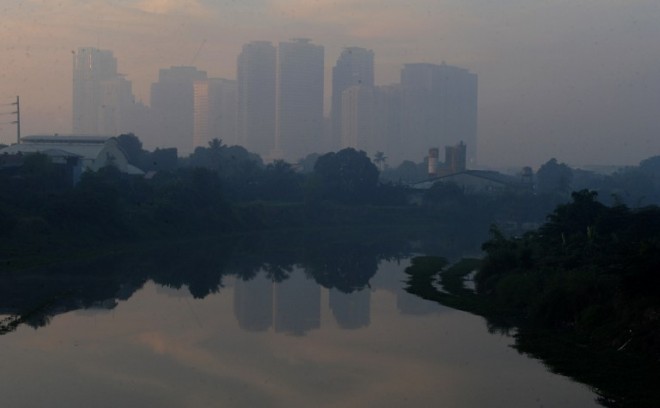Metro’s air quality getting worse—study
Yes, being stuck in horrible traffic jam on a daily basis can kill you.
With the worsening air quality in Metro Manila, commuters who get stuck on the road for hours and endure long lines to catch a ride in public transportation are exposed to various kinds of pollutants, making them highly vulnerable to developing respiratory disease and cardiovascular illnesses, according to health experts.
“Traffic is really bad for our health,” Dr. Anthony Leachon, a cardiologist at Manila Doctors Hospital and the president of the Philippine College of Physicians Foundation, told the Philippine Daily Inquirer on Sunday.
Leachon said air pollution, a major problem particularly in urban centers, could lead to lung diseases such as bronchitis, exacerbation of bronchial asthma and recurrent respiratory tract infections and allergies.
Air pollution also contributes to cardiovascular diseases and deaths, according to Leachon, citing a 2010 report of the American Heart Association, stating that short-term exposure to air pollution increases the risk of heart attacks, strokes, irregular heart beats or cardiac arrhythmia in predisposed individuals.
Article continues after this advertisementThese vulnerable individuals include the elderly and those with pre-existing medical conditions such as diabetes, chronic obstructive heart disease and hypertension, he said.
Article continues after this advertisementHe also cited a study conducted by researchers at the Institute of Epidemiology of Helmholtz Center in Munich, Germany, showing that heavy traffic, regardless of what mode of transportation taken, could triple one’s risk of heart attack within an hour due to the air pollution from car fumes.
The researchers had also interviewed 1,454 people who survived heart attacks in a previous study and found out that many of them had been stuck in terrible traffic in the hour before their heart attack. The study also suggested that stress brought about by heavy road gridlock could be a contributing factor.
“Thus, traffic woes are fatal. And the government should embark on a major strategic plan in the next six years or longer to alleviate this stressful malady afflicting daily commuters and the whole nation as well,” said Leachon.
Last week, Transportation Secretary Joseph Abaya apologized for saying that Metro Manila’s deteriorating traffic condition “is not fatal.” In a statement on Thursday last week, Abaya admitted that his remark came across as “reckless and insensitive.”
While the transportation chief has offered his apology to the hundreds of thousands of commuters who were offended by his remarks, medical experts still offered their two cents’ worth on the matter, explaining how traffic jams can be detrimental to one’s health.
In a statement, Dr. Leo Olarte, chair of the environmental group Coalition of Clean Air Advocates of the Philippines, said traffic jams in the capital worsened all the deadly effects of unabated motor vehicle emissions on the health and lives of daily commuters.
“If you’re a patient with cardiovascular ailments, the intensive particulate matter or soot exposure that you can be subjected to when caught in monstrous traffic jams for several hours can possibly trigger life-threatening episodes of heart attack, stroke and even sudden death right there and then even when you’re inside your air conditioned cars,” said Olarte.
Latest records from the Department of Environment and Natural Resources showed that Metro Manila’s air quality situation has worsened in terms of total suspended particulates from 106 µg/Ncm from July to December 2014 to 130 µg/Ncm from January to April this year.
Both figures are beyond the maximum safe level of 90 µg/Ncm.
Particulate Matter of 10microns in diameter (PM10) in Metro Manila’s air also jumped from 52 µg/Ncm from July to December 2014 to 62 µg/Ncm during the first four months of the year, two points higher than the standard PM10. Eighty-five percent of the capital’s total air emissions come from vehicles, records show. Jocelyn R. Uy, Philippine Daily Inquirer
